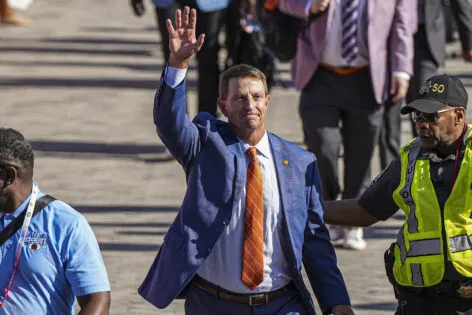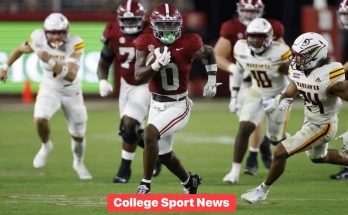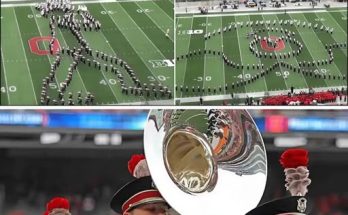Dabo Swinney’s ACC Future Takes Drastic Turn After Injury Woes Force Clemson HC’s Major Decision
The world of college football can often feel like a whirlwind, with fortunes changing in the blink of an eye. For Dabo Swinney and the Clemson Tigers, that whirlwind has arrived in the form of a major challenge—one that could have significant ramifications for their future in the ACC and the larger college football landscape. Over the course of the past season, Swinney’s program has been forced to deal with a spate of key injuries, both on offense and defense, and these injury woes have forced the head coach into making difficult decisions about the direction of his team. The consequences of these decisions will reverberate through the ACC, Clemson’s standing in it, and Swinney’s tenure as the head coach of the Tigers.
When we think about Dabo Swinney and the Clemson Tigers, we tend to picture a program that has been one of the most dominant forces in college football over the past decade. Clemson has consistently been in the hunt for a playoff berth, securing national championships in 2016 and 2018 and making multiple other appearances in the College Football Playoff. Swinney has been the driving force behind this success, instilling a culture of excellence and a winning mindset into his players. However, no coach or program is immune to adversity, and Swinney is now facing some of the toughest decisions of his career after a season marred by injuries.
Injuries are part of the game of football, but when key players—especially those at critical positions—are sidelined for extended periods, it forces a coaching staff to rethink everything from game plans to player development strategies. For Swinney, this season’s injury woes have been particularly challenging. Clemson has had its fair share of setbacks, particularly on the offensive line, where injuries have left the Tigers thin at key spots. The quarterback position has also been impacted, with backup quarterbacks being thrust into starting roles earlier than expected, leading to an even greater sense of urgency for Swinney and his staff.
One of the more impactful decisions Swinney had to make was adjusting his offensive strategy to account for the injury issues. After losing some of his most important offensive players, including standout running backs and wide receivers, Swinney was forced to modify his usual high-powered offensive scheme. The Tigers, traditionally a team that thrives on speed and explosive plays, had to rely more on their defense and a more methodical approach to move the ball down the field. While Clemson has long been known for its high-flying offense under Swinney, this season’s injury troubles forced him to reassess and ultimately implement a more balanced attack.
But injuries weren’t confined to just one side of the ball. On defense, the Tigers have also seen key players go down, including star defensive linemen and linebackers. With a defense that has historically been the bedrock of Swinney’s championship-caliber teams, this new wave of injuries threw a wrench into Clemson’s plans. Despite having one of the deepest and most talented defensive rosters in the nation, the lack of experience and cohesion due to the injuries led to uncharacteristic lapses in execution and coverage, creating problems the Tigers had not previously faced under Swinney’s leadership.
This combination of injuries and the resulting challenges forced Swinney to take drastic action. His first move was to address his depth chart and implement a more flexible rotation. Players who had not seen significant playing time in past seasons were thrust into starting roles, and younger players had to step up in a way that was previously unforeseen. This sudden influx of new talent led to both positive and negative results. While it provided some players with valuable experience, it also showcased the growing pains of a program that had grown accustomed to having veterans lead the charge.
However, Swinney’s decisions didn’t stop with simply plugging gaps in the starting lineup. He also had to reevaluate the long-term trajectory of his program, particularly in terms of recruiting. The injury woes exposed certain weaknesses in the Tigers’ depth that could not be ignored. For a program like Clemson, which has been a major player in the recruiting battles for several years, losing out on top recruits could have long-term consequences. Swinney’s ability to recruit top talent to the program had always been one of his greatest assets, but now, with multiple injuries impacting the team, it became apparent that the Tigers needed to bolster their recruiting efforts to ensure they could withstand similar challenges in the future.
With a heightened sense of urgency, Swinney has already begun making moves in the recruiting world, focusing on high school prospects who can fill the gaps in the roster while also keeping an eye on the transfer portal for players who could provide immediate help. While the transfer portal has become a vital tool for many programs, Swinney has traditionally built his teams around homegrown talent, but his latest decisions signal a shift in strategy. The injury problems that have plagued his team this season have made it clear that relying solely on high school recruits may not be enough to sustain Clemson’s national championship aspirations in the current landscape of college football.
The most significant change, however, may be how Swinney approaches his own coaching philosophy. Known for his high-energy, positive attitude, and family-like culture, Swinney has built a program that has emphasized player development, accountability, and hard work. But this season has shown that no matter how well you build a program, injuries can test even the best systems. The pressure on Swinney to make the right decisions has never been greater. He has already begun emphasizing the importance of player resilience, both mentally and physically. Swinney has stated that his focus is on developing his players’ ability to persevere through adversity, something that is as essential as physical skill in the brutal world of college football.
Despite these challenges, Swinney remains optimistic. His track record speaks for itself, and while the current season has been a difficult one for Clemson, there are no signs that the Tigers are going to back down from the competition. In fact, Swinney has used this adversity as an opportunity to redefine the identity of his program. Clemson has always been a team that thrives on culture and leadership, and Swinney has made it clear that this culture will not be broken, even in the face of injury setbacks.
As Clemson prepares for the rest of the season and beyond, it is clear that Swinney’s decisions will shape the trajectory of the program for years to come. The team’s ability to overcome the injury struggles will rely not only on the return of key players but also on how well Swinney can adjust his coaching philosophy to match the new realities facing the college football world. It is still too early to determine what impact this season’s challenges will have on the Tigers’ long-term standing in the ACC, but one thing is for certain: Dabo Swinney is no stranger to overcoming obstacles, and if anyone can turn things around, it is the Clemson head coach.
Looking ahead, the focus for Swinney and his staff will be on rebuilding Clemson’s roster and ensuring that the team remains competitive in the ACC and on the national stage. With a revamped recruiting approach, a redefined offensive and defensive strategy, and an emphasis on mental toughness, Swinney will work to turn the page on this injury-plagued season and get Clemson back to its championship-winning ways. While the road ahead may be more challenging than ever, Clemson is a program built on resilience, and Swinney’s leadership will undoubtedly continue to guide them through whatever challenges lie ahead.



